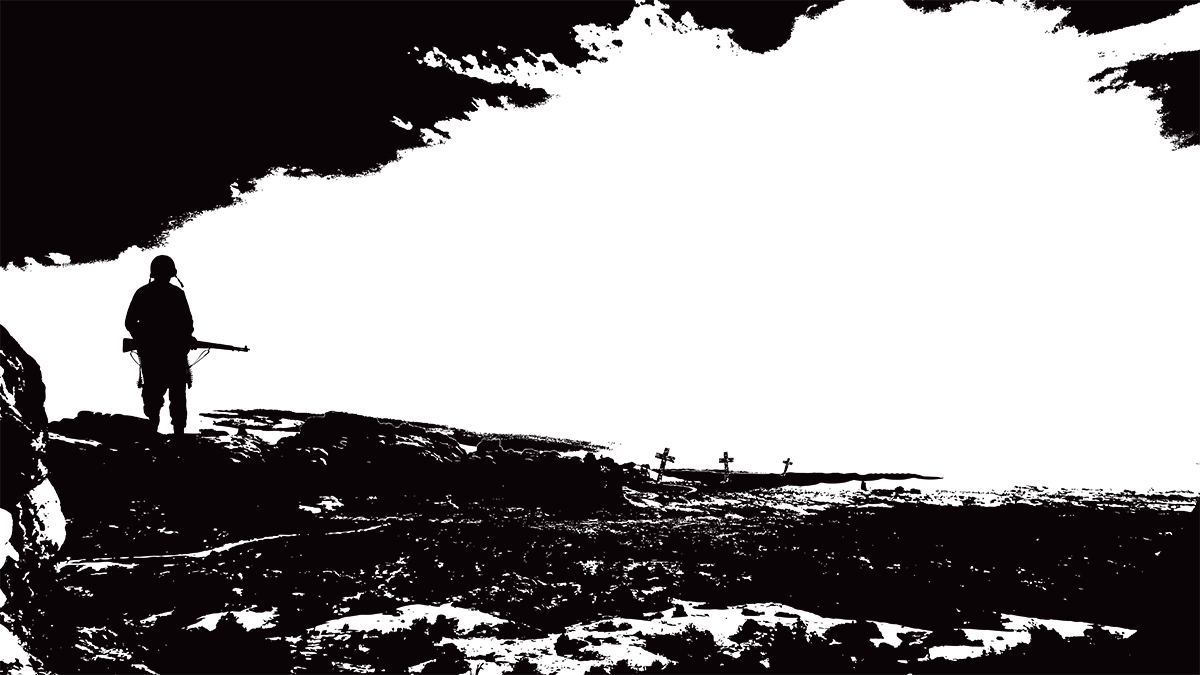You don’t need me to tell you this: the world is in a mess.
In 2016, being in their tenth year of operations, the Global Peace Index (GPI) released its findings over the past decade. “The results of the 2016 GPI reinforce the underlying trend of the last 10 years . . . The world is becoming . . . less peaceful.”1
The report highlighted that, since 2008, deaths on the battlefield have increased fivefold to more than 100,000 in 2015. This contributed to 57 million displaced people or refugees worldwide, which in turn leads to food shortages and diseases.
Terrorism increased by 286 per cent since 2008. In 2015, only 69 of 163 countries rated by GPI didn’t record a terrorism event. Five countries had more than 500 terrorism deaths in 2014; in 2015 it was 11.
This year in the US, there were 248 mass shootings to July 31.2
On Easter Sunday in Sri Lanka, attacks killed 258 and injured more than 500. Then in our own backyard, we saw the shootings in Christchurch.
According to GPI, if you want to live in the planet’s most peaceful country, pack your thermals: it’s Iceland. The second most peaceful country at the end of last year . . . New Zealand!3 Many had fled there for that exact reason. Some were killed while they worshipped in their mosque.
The world is in a mess.
Jesus warned us that events like this would happen. While Jesus made it clear that “no-one knows the day or the hour” He will return, in Matthew 24 He gives us signs that His return is near, “even at the door”.
The list includes: false messiahs (v 5); wars and rumours of wars (v 6); nation rising against nation (v 7); famines and earthquakes; an increase of wickedness (v 12). As we see these signs, we know Jesus’ return is that much closer.
If you grew up in the Church, or have ever been to an outreach series, you know that, with good reason, an emphasis is placed on these signs to show that Jesus is coming soon. But I wonder if we have missed something. I wonder if, because of our knowledge of prophecy, we skip over a sign that Jesus emphasises.
Jesus tells us: “As it was in the days of Noah, so will it be at the coming of the Son of Man” (Matthew 24:37).
What was it like in the days of Noah? Genesis 6:5 talks about great wickedness and how the inclination of the human heart was evil.
This is how the state of the world was back then and Scripture tells us it is how the world will be just before Jesus returns. In Luke 17, Jesus references the days of Lot and the sins of Sodom and Gomorrah—so grievous (Genesis 18:10) that God destroyed it.
Having established the wickedness of that time, what did Jesus emphasise? What sign did Jesus want to bring to our attention? In the days of Noah, “People were eating, drinking, marrying and being given in marriage” (Luke 17:27). That sounds like life was going on as normal.
And in the days of Lot? “People were eating and drinking, buying and selling, planting and building. But the day Lot left Sodom, fire and sulphur rained down from heaven and destroyed them all” (Luke 17:28-30).
People were going about their normal everyday activities and then the end came. In fact, the New Living Translation renders Luke 17:30: “Yes, it will be ‘business as usual’ right up to the day when the Son of Man is revealed.”
Too often we can focus on the signs of wars, earthquakes, famine, destruction, times of trouble and prophetic events and forget that in many ways life will seem like it is normal—“business as usual”. [pullquote]
In Noah’s time, there were the signs—wickedness was increasing, an old man built a boat, animals came to go into the boat—but on the whole life was pretty normal. The same can be said for the people in Sodom. Sure, morality was trending down rapidly, but that seemed normal one day—the next day saw destruction.
Jesus says, for those who are not prepared, the same is going to happen when He returns. Adventist writer Roy Adams puts it this way: “It seems clear from the apocalyptic portrayals before us here that we are not to expect a state of total anarchy or chaos before the Advent. The basic structures of society will not collapse.”
He adds that “the marriage institution will still command respect”. Commerce continues with people “buying (not taking by force) and selling (implying a degree of monetary stability). Families will be travelling on vacations when the heavens split asunder.”
“True there will be violence in the run-up to the Advent—even a time of trouble. But the sobering note in Jesus’ statement is that, on the very brink of divine judgement, things might look quite normal to us. We will have seen it all before. That’s why He admonished us to keep alert, ‘because the Son of Man will come at an hour when you do not expect him’ (Matthew 24:44).”4
And isn’t that the point? We don’t know when Jesus will come, therefore we always need to be ready!
How can it be so wicked, yet so normal at the same time? This could be called the frog-in-the-kettle syndrome. Place a frog in a kettle in cold water and all is OK, but turn up the heat gradually, it doesn’t even know.
Roy Adams suggests that “we will have seen it all before” and we’ve become desensitised to what’s going on around us.
A few weeks ago, I woke on a Sunday morning and checked the overnight news. I inwardly groaned at yet another mass shooting in America that left 22 people dead. In the cricket, Steve Smith in his comeback Ashes tour, scored a century for Australia. I read the second article carefully, not the first.
The following morning, the main news headline screamed of another mass shooting with nine people dead. The reporter said, “Tragically this is becoming the new normal.” Maybe he’s right, for the story that really caught my eye was another Steve Smith 100 in his second innings!
Horrific events happen so often that we begin to pay less attention to them. In times like these Jesus warns, “You also must be ready, because the Son of Man will come at an hour when you do not expect him” (Luke 12:40).
Travis Manners is senior pastor of Morphett Vale Seventh-day Adventist Church, South Australia.






